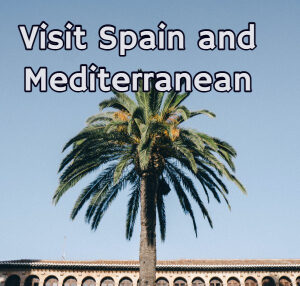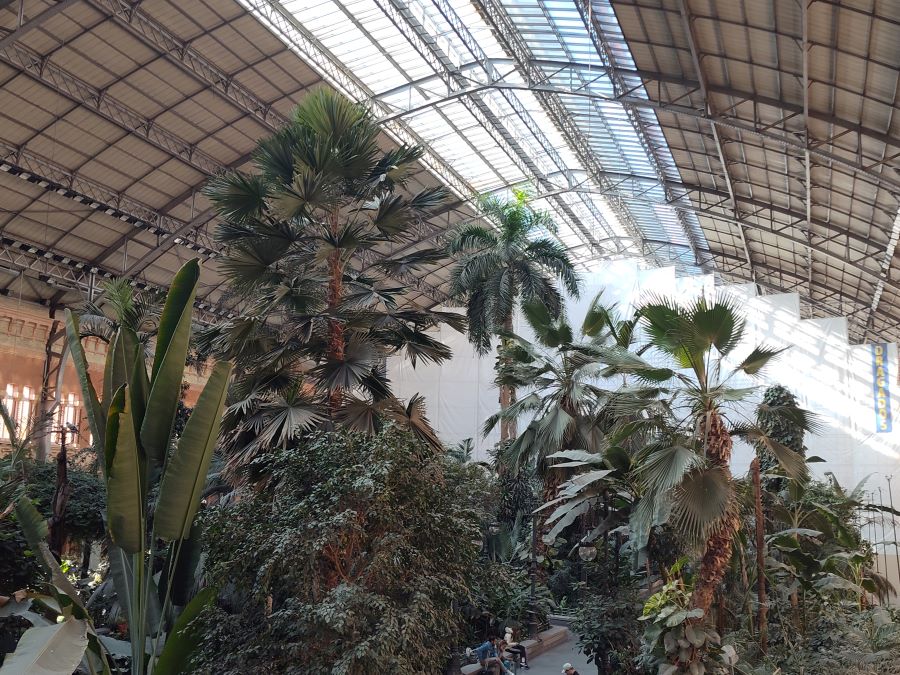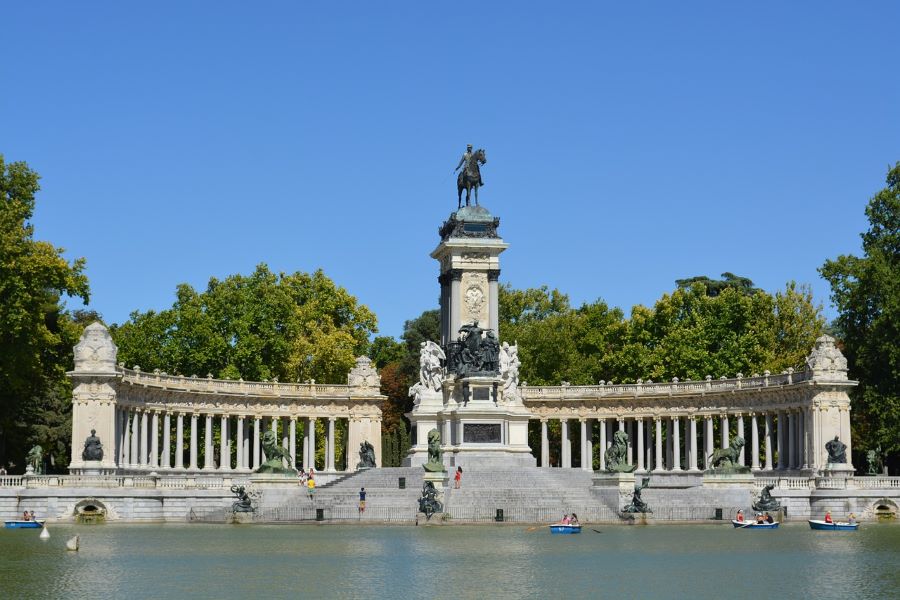Visit Madrid in One Day
In this post we explore Madrid in one day and tour the central part of the city and visit the important landmarks and monuments, food scene, cool neighborhoods and parks and cultural treasures in only 24 hours. Use this quick guide to inspire a quick visit to Madrid and see all the highlights.
Madrid definitely is a city worth spending a lot of time visiting the many attractions and activities, but if you are in a transition and only have one day to spend before you get to your next destination then you can do Madrid in one day. AFter exploring Madrid many times, I’ve created an itinerary that can give you a good taste and experience of the city in just one full day exploring these wonderful sites and landmarks.
Madrid in One Day: Top Landmarks, Food, and Culture to Experience the city in just 24 hours
This one-day itinerary I’ve created will show you the easiest ways of getting around and seeing the most vital highlights enough to give you a good look to maybe spend more time on another trip.
These ended up being my favorite sites to see and experience the best of the city in just a short timeframe. Check out this itinerary below and hopefully you will like to do something similar when you visit the capital city of Spain.

Why visit the Capital city of Madrid in just one day
Visiting Madrid in just one day offers a quick yet satisfying glimpse into the heart of Spain’s culture, history, and urban energy. Even with limited time, you can take in iconic landmarks like the Royal Palace, stroll through the elegant Plaza Mayor, and explore the lively Gran Vía for shopping and people-watching. A short walk through Retiro Park offers a green escape, while a stop at the Prado Museum or Reina Sofía gives a taste of world-class art. Food lovers can savor local flavors at the Mercado de San Miguel or tuck into classic tapas at a neighborhood bar. It’s a day packed with variety and a great introduction to the city’s vibrant personality.
How to get to Madrid
1. By Air
- Madrid-Barajas Adolfo Suárez Airport (MAD) is the main international gateway.
- Direct flights from major cities in Europe, North America, Latin America, and Asia.
- Airport is about 12 km from the city center, easily accessible by metro, bus, or taxi.
2. By Train
- High-speed AVE trains connect Madrid with major Spanish cities like Barcelona, Seville, Valencia, and Málaga.
- Main train station: Madrid Puerta de Atocha (for south and east Spain), Madrid Chamartín (for north Spain).
- International train connections available from France and Portugal (though limited and slower).
3. By Bus
- Numerous long-distance bus companies (like ALSA and FlixBus) serve Madrid from Spanish cities and nearby European countries.
- Major bus terminals: Estación Sur de Autobuses and Avenida de América Interchange.
4. By Car
- Well-connected by a network of autovías (motorways) and toll roads from all parts of Spain and neighboring countries.
- Parking in the city center is limited and expensive; public transport is often a better option once in the city.
5. By Rideshare or Carpool
- Services like BlaBlaCar offer carpooling options for travelers coming from other Spanish cities or nearby European countries.
Start your day early in Madrid
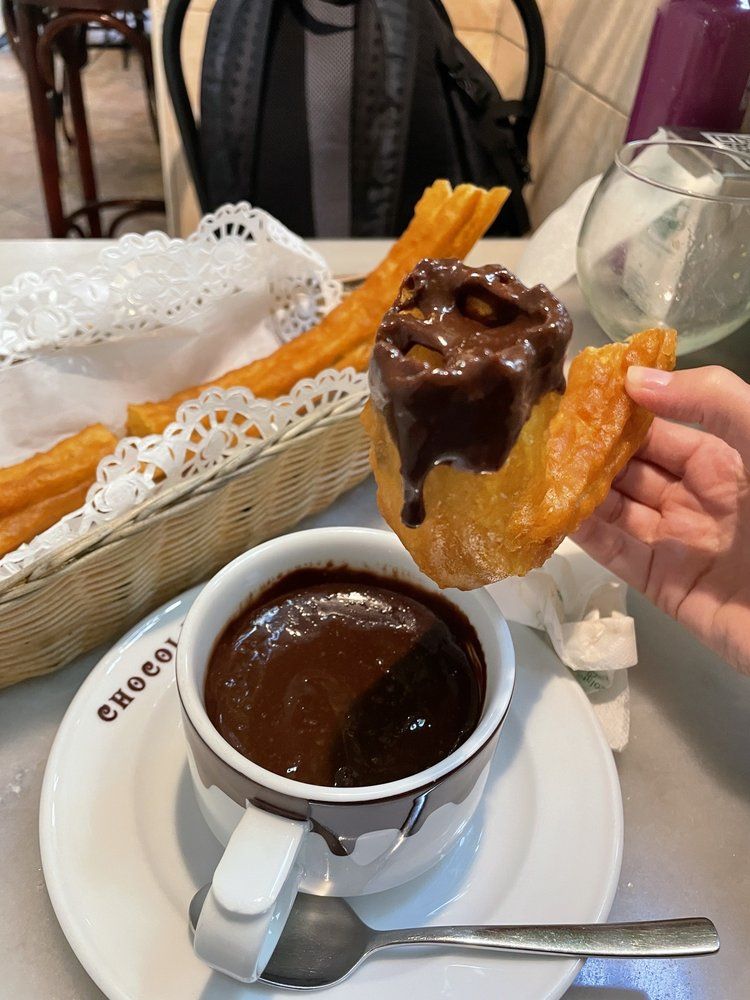
Breakfast at one of the oldest Churro and Hot Chocolate shop
One of my favorite early morning things to do is to have a delicious and traditional churro and hot chocolate meal and what is more iconic than doing this at the churro institution at San Gines. One of the oldest institutions in Madrid, San Gines is well loved and an early start of day, will allow you to indulge visiting and enjoying this decadent churro and hot chocolate breakfast. You can also order other traditional favorites at San Gines, if you are looking for something more substantial to eat.
This classic bar has expanded to a compound with traditional white marble tables and counter areas. Popular timeframes to visit in the early hours of the morning or late at night after partying all night in Madrid.
San Gines website here
Address: Pasadizo de San Ginés, 5, Centro, 28013 Madrid, Spain
Here’s a video tour of visiting San Gines in Madrid for breakfast Churros and Chocolate below
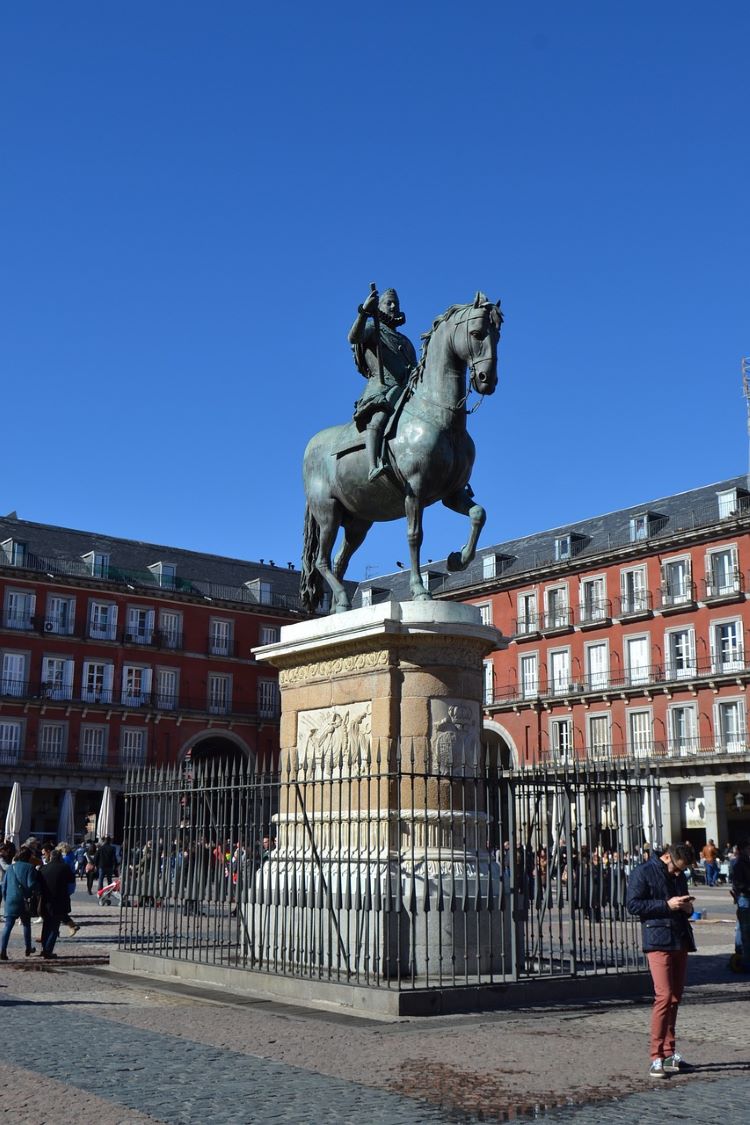
Visit the grand Plaza Mayor
An easy walk from San Gines will bring you to Plaza Mayor, the beautiful Plaza that is in central Madrid and I think it’s a great starting point to experience in the central district.
Plaza Mayor is one of Madrid’s most iconic and beautiful squares, known for its grand architecture and historic charm. Framed by elegant three-story buildings with red façades and uniform balconies, the square has been a central gathering spot since the 17th century. In the middle stands a bronze statue of King Philip III on horseback, a nod to its royal past. Visitors can enjoy the vibrant café scene, browse souvenir shops tucked under the arcades, or take in seasonal events like Christmas markets or cultural festivals. Highlights include the Casa de la Panadería, once the city’s main bakery and now a cultural space, and the ornate frescoes on its façade. It’s a great place to soak in the atmosphere, people-watch, and start a walking tour of central Madrid.
Address: Plaza Mayor, 28012 Madrid, Spain
Check out this video tour exploring the Plaza Mayor in Madrid for inspiration below
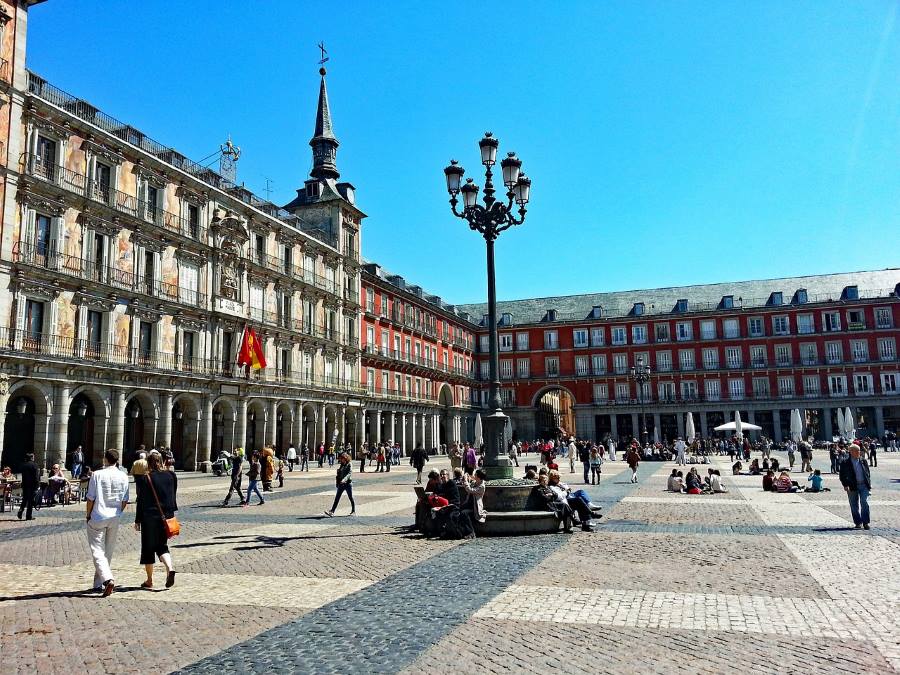
Puerta Del Sol
A short walk from Plaza Mayor and you’ll hit the grand and main plaza or squares worth visiting with impressive monuments to see and photograph.
Puerta del Sol is one of Madrid’s most well-known and busiest public squares, often considered the symbolic center of the city—and even the country. It’s home to the “Kilometer Zero” marker, the point from which all distances on Spain’s road network are measured. The square is also known for the clock tower atop the Real Casa de Correos, where locals gather on New Year’s Eve to eat twelve grapes at the stroke of midnight. Key sights include the statue of the Bear and the Strawberry Tree (El Oso y el Madroño), a symbol of Madrid, and the vibrant pedestrian areas that branch out in all directions, packed with shops, cafés, and street performers. It’s a lively hub that captures the energy of the city and connects eaMercado de San Miguel,sily to nearby attractions like Plaza Mayor and Gran Vía.
Address: Puerta del Sol, 28013 Madrid, Spain
Here’s a quick video tour exploring the area of the Puerta del Sol below for inspiration

Public market of Mercado de San Miguel
An easy walk from Puerto del Sol, is the stylish public market or Mercado de San Miguel and a fantastic place for a snack or drink to take a break and enjoy this colorful and sophisticated marketplace.
Mercado de San Miguel is a popular covered market in Madrid that blends historic charm with gourmet flair. Housed in an elegant iron-and-glass structure dating back to 1916, the market has become a favorite for both locals and visitors looking to sample high-quality Spanish food in a vibrant setting. Inside, you’ll find a wide range of stalls offering tapas, Iberian ham, fresh seafood, olives, cheeses, and wines—all perfect for snacking or creating a casual meal on the go. It’s more upscale than a traditional market, with a focus on presentation and experience, but still retains a social, bustling vibe ideal for a quick stop or leisurely graze.
Address:
Mercado de San Miguel
Plaza de San Miguel, s/n, 28005 Madrid, Spain
Here’s a video tour of exploring the Mercado de San Miguel for inspiration below

Visit Gran Via in Madrid
If you are an architecture buff, the Gran Via is truly impressive and a worthwhile stroll on this busy and famous street and one of my favorite streets to enjoy walking through in Madrid.
Gran Vía is one of Madrid’s busiest and most famous streets, often called the city’s main thoroughfare for shopping, entertainment, and nightlife. Stretching through the heart of the city, it’s lined with a mix of historic buildings, modern stores, theaters, and restaurants. Visitors can explore iconic architectural landmarks like the Metropolis Building with its distinctive dome, or catch a show at one of the many theaters hosting musicals and plays. Gran Vía is also great for shopping, with everything from international brands to local boutiques. At night, the street comes alive with lights and a lively crowd, making it a perfect spot to experience Madrid’s urban energy. It’s easy to access from major metro stops and connects well to other key neighborhoods like Sol and Chueca.
Check out my post to exploring Gran Via here for more information and inspiration.
Here’s a video tour exploring the Gran Via street and one of the most important shopping and entertainment streets of Madrid below
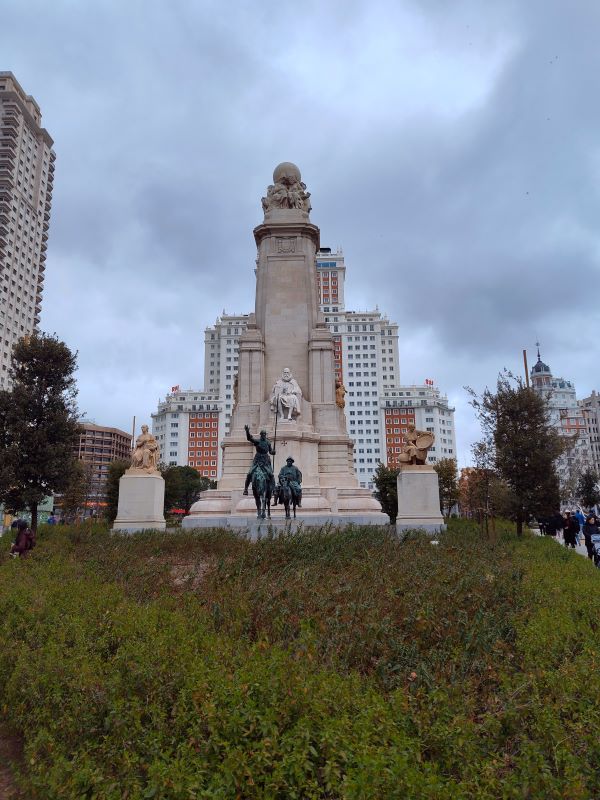
Enjoy Plaza de Espana
You can walk the entire length of Gran Via or take the Metro or taxi to the next stop at Plaza De Espana, another grand and beautiful square of Madrid and another great photo op place to photograph or just take a break and enjoy the scene and vibe of the plaza.
Plaza de España is a spacious and popular square located at the western end of Gran Vía, offering a quieter contrast to the city’s busiest streets. It features a large monument dedicated to Miguel de Cervantes, Spain’s famous writer, with statues of Don Quixote and Sancho Panza adding character to the space. The square is surrounded by notable buildings like the striking Torre de Madrid and Edificio España, both of which showcase impressive architecture from the mid-20th century. It’s also a gateway to the nearby Templo de Debod, an ancient Egyptian temple relocated to Madrid, and Parque de Oeste, a green area perfect for a stroll. Plaza de España provides a nice mix of history, architecture, and relaxation in a central yet less crowded part of the city.
Address:
Plaza de España, 28008 Madrid, Spain
Here’s a quick tour visiting the Plaza de Espana in Madrid below

Templo de Debod
Templo de Debod is an ancient Egyptian temple that was carefully dismantled and relocated to Madrid in the 20th century as a gift from Egypt. Situated in Parque de Oeste near Plaza de España, it offers a unique and peaceful spot away from the city’s bustle. The temple dates back over 2,000 years and is dedicated to the gods Amun and Isis. Visitors can explore its stone structures, hieroglyphs, and small chambers while enjoying panoramic views of the city, especially beautiful at sunset. It’s a rare piece of ancient history in Madrid and a quiet, reflective place to appreciate a different culture right in the heart of Spain.
Address: Calle de Ferraz, 1, 28008 Madrid, Spain.
Here’s a quick tour of the Templo de Debod in Central Madrid close to Plaza de Espana below

Madrid Opera House
The Madrid Opera House, known as the Teatro Real, is one of Spain’s most prestigious and historic cultural venues. Located near the Royal Palace, this 19th-century building combines impressive neoclassical architecture with modern renovations inside, offering world-class opera, ballet, and classical music performances. The theater is renowned for its excellent acoustics and elegant interiors, making it a must-visit for lovers of the performing arts. Beyond shows, visitors can take guided tours to explore its lavish halls, backstage areas, and learn about its rich history. It’s a cultural centerpiece in Madrid, reflecting the city’s deep appreciation for the arts.
**If this is a special interest then definitely sign up for a guided tour of the Opera House interior, if it’s not a biggie, then a walk around the Teatro Real is good enough. My preference typically is to watch an actual performance while I’m visiting, but this will have to work with your scheduled visit.
Address:
Teatro Real
Plaza de Isabel II, s/n, 28013 Madrid, Spain

Madrid Royal Palace
The Madrid Royal Palace, or Palacio Real, is the official residence of the Spanish royal family, though it is mainly used for state ceremonies today. It’s one of the largest and most impressive palaces in Europe, showcasing stunning Baroque and classical architecture. Inside, visitors can explore lavishly decorated rooms filled with priceless art, ornate furniture, and historic artifacts, including the Royal Armoury. The palace is surrounded by beautiful gardens, like the Sabatini Gardens, and overlooks the charming Plaza de la Armería. It’s a highlight for anyone interested in Spain’s royal history and offers a glimpse into the country’s grand past.
Check out my post to visiting Palacio Real here for more details and information.
** I would opt for a skip the line and a guided tour program here to make this an easy visit with a knowledgeable guide to show you about the history and other inside scoop.
Address:
Palacio Real
Calle de Bailén, s/n, 28071 Madrid, Spain
Here’s a wonderful tour of the interiors of the Royal Palace at Madrid below for inspiration
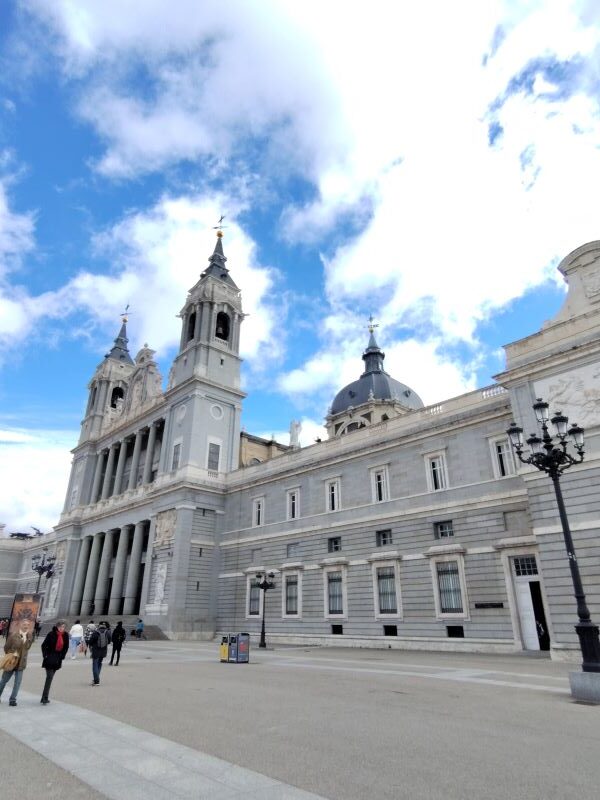
Madrid Cathedral
Madrid’s main cathedral, the Almudena Cathedral (Catedral de la Almudena), stands near the Royal Palace and is notable for its mix of architectural styles, including Neo-Gothic, Neo-Romanesque, and Neo-Classical influences. Completed in the late 20th century, it’s one of the newer cathedrals in Europe but holds great significance as Madrid’s principal place of worship. Inside, you’ll find a bright and spacious interior with modern stained glass windows and a beautifully decorated crypt. The cathedral also offers visitors the chance to climb a dome viewpoint for panoramic views of the city and the palace. Its location makes it a key stop when exploring Madrid’s historic center.
This sight typically has a shorter line and easier to get into without a long wait and need for a guided tour so I would just go with the flow and check it out on your own.
Address:
Catedral de la Almudena
Calle de Bailén, 10, 28013 Madrid, Spain
Here’s a video tour and history of the Almudena Cathedral at Madrid below
Retiro Park
Late afternoon, you can take public transportation or catch a taxi or Rideshare app from the cathedral to Retiro park and stroll the lovely gardens, the crystal palace, the large lake area and see some of the temporary art exhibits at the park. The park is a nice time to enjoy the late afternoon timeframe which is probably less crowded during the morning to early afternoon timeframe. Enjoy the many attractions or just find a quiet spot, people watch or meditate, Retiro Park is a lush green area to rest or be active depending on your mood to relax or explore this massive park grounds.
There’s no planned itinerary of what you should see but check out my post on visiting Retiro Park here for highlights of all the attractions and must visit places around this expansive park area. I share my favorite places and attractions to visit at the park to give you the highlights to visiting and enjoying this beautiful park
Here’s a look at the highlights to visiting Retiro Park below of what to see and explore in the area

Visit the Prado or alternate art museum
An easy and short walk from Reitro Park and must visit location is the Prado Museum, the most iconic art museum in Madrid. You’re time frome to visit here is limited but they do offer short audio tours that you can choose from and follow that exact itinerary. To avoid all the long lines, I would opt for a guided tour or audio tour and skip the line booking below. The audio tours showcase the important art collections to visit based on the timeframe that you can allocate for the tour.
** Check out the Prado Museum with skip the line and a guided tour here or skip the line entry with an audio tour here for reserving a visit timeframe and learn the various details to visit the site.
There are other fantastic museums to visit in place of the Prado if you want to substitute another art museum. Places I would recommend includes:
The Museo National Thyssen-Bomemisza and the Museo Nacional Centro de Arte Reina Sofia.
Prado Museum address: Retiro, 28014 Madrid, Spain
Check out the fantastic galleries and artwork at the Prado museum below for more inspiration
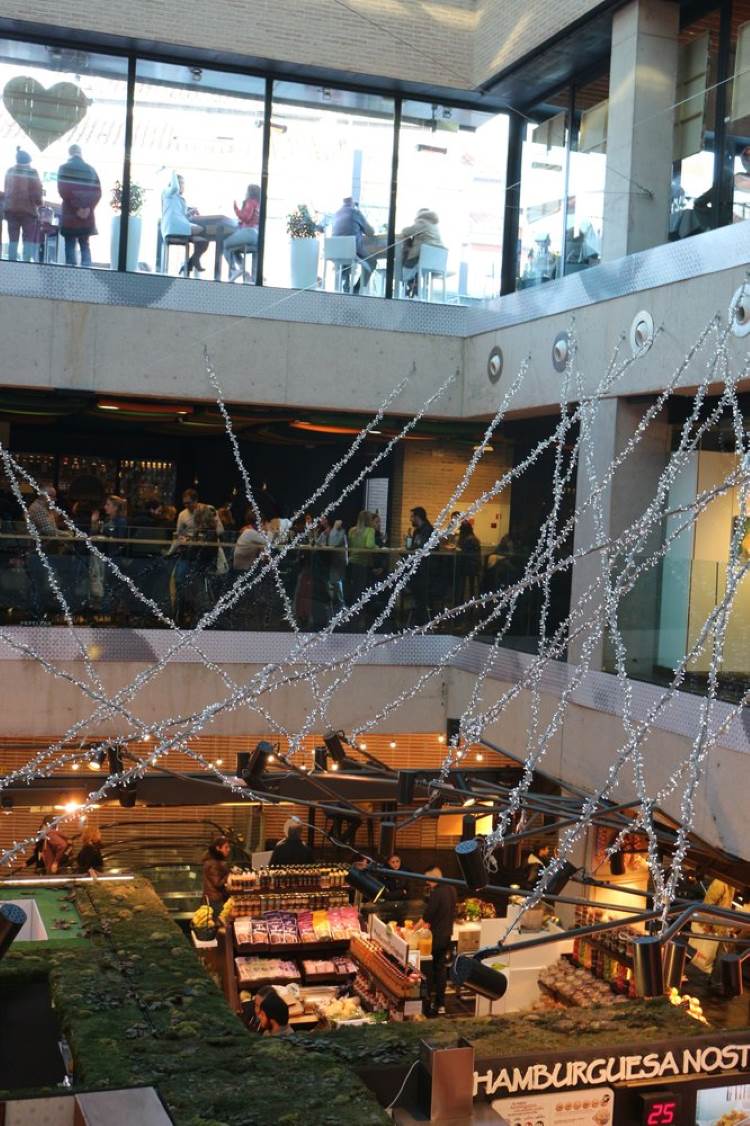
End the evening at a local food public market: San Anton
You’ll be famished by the time your down with a full day of touring and what a better ending than to experience a food venue with plenty of offerings. Check out the San Anton food market and you can take your time to choose some delicious dish that may appeal to your taste buds. For reference, i’ve included osme of the most popular foods of Madrid below and if you see it on the menu, give it a try!
Mercado de San Antón in Madrid’s Chueca neighborhood is a lively and modern food market that makes a great spot for an evening meal, especially if you’re in the mood to sample a variety of flavors in a relaxed, urban setting. The ground floor offers fresh produce and gourmet goods, but head upstairs for the real draw—an upper-level food court and rooftop terrace where you’ll find everything from tapas and fresh seafood to sushi and fusion bites. The vibe is trendy but welcoming, with locals and visitors gathering over drinks and shared plates. It’s an easy place to linger, whether you’re grabbing a casual bite or settling in with a glass of wine as the sun sets over the rooftops.

What to eat in Madrid
When you’re hungry and starting to look at restaurant menu’s, consider the popular local street food and dishes you should try if you see them on the menu.
1. Bocadillo de Calamares
- Fried calamari rings served in a crusty baguette
- Classic Madrid snack, especially popular around Plaza Mayor
2. Churros con Chocolate
- Fried dough pastries dusted with sugar
- Served with thick, rich hot chocolate for dipping
- Commonly enjoyed as a breakfast or late-night treat
3. Tortilla Española (Spanish Omelette)
- Thick omelette made with eggs, potatoes, and onions
- Served as a tapa or sandwich filling
4. Croquetas
- Breaded and fried bite-sized snacks
- Typically filled with ham, chicken, or cheese
5. Callos a la Madrileña
- Traditional Madrid-style tripe stew
- Slow-cooked with chorizo, blood sausage, and spices
6. Patatas Bravas
- Fried potato cubes topped with spicy tomato sauce and aioli
- A staple tapa in Madrid bars
7. Huevos Rotos
- Fried eggs served over a bed of fried potatoes
- Often accompanied by ham or chorizo
8. Jamón Ibérico
- Cured Iberian ham, thinly sliced
- Often enjoyed on its own or with bread
9. Empanadas and Pastries
- Small savory pies filled with meat, cheese, or vegetables
- Common street snack
10. Spanish Cheeses and Olives
- Local varieties often sold at markets and street stalls
- Great for quick bites or tapas-style eating
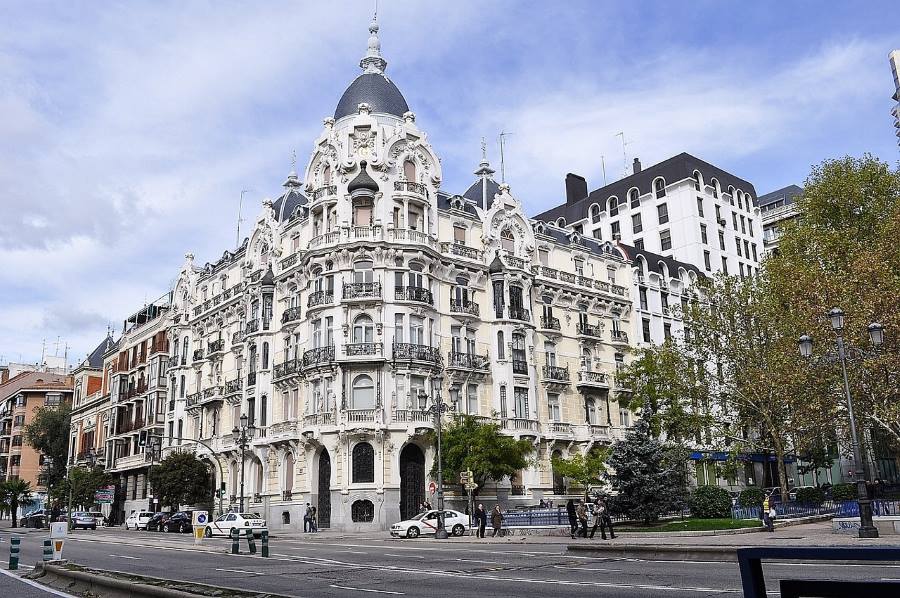
Any other tips to visiting Madrid in only 24 hours
Here’s some more tips to make your visit more realistic and precise while still having a fantastic time and not feeling as rushed. I would definitely pick and choose things above on the Interary that will be more interesting for you to decide what’s worth visiting or spending more time doing.
1. Start Early
- Begin your day by 8 AM to make the most of daylight and avoid crowds at major attractions.
2. Focus on Central Neighborhoods
- Stick to key areas like Sol, Gran Vía, Plaza Mayor, and La Latina to maximize sightseeing without long travel times.
3. Prioritize Top Attractions
- Pick 2–3 must-sees such as the Royal Palace, Prado Museum, or Retiro Park and allow time to truly enjoy them.
4. Use Public Transportation or Walk
- Metro is fast and efficient for covering longer distances.
- Walking lets you see more of the city’s architecture, squares, and street life—bring comfortable shoes.
5. Eat Like a Local
- Try a quick breakfast of churros and chocolate, lunch with menu del día, and tapas for dinner.
- Visit Mercado de San Miguel or a local tapas bar in La Latina or Malasaña.
6. Book Tickets in Advance
- Skip-the-line entries for places like Prado Museum or Royal Palace can save valuable time.
7. Consider a Hop-On, Hop-Off Bus Tour
- Efficient for a quick overview of the city and hitting multiple sights if you’re short on time.
8. Stay Central
- Book accommodation in or near the city center (Sol, Opera, Huertas) for quick access to attractions.
9. Embrace the Local Schedule
- Expect a later lunch (around 2 PM) and dinner (after 8 PM)—use the siesta hours to relax or visit museums.
10. Pack Light and Be Mobile
- Avoid luggage hassles by using a daypack and storing bags at your hotel or a luggage locker if in transit.

Further Reading – Visiting Madrid
Here’s some more posts for extended stays, unique places to visit, free things to do in Madrid and even some hidden gems to see and do around Madrid, check it out below.
Free things to do in Madrid, Spain

About author – Noel Morata
After relocating from the United States to Andalusia in 2018, I’ve made it my mission to discover every corner of Spain. Based just east of Granada, I’ve spent over 12 months exploring Málaga province, visiting each attraction featured in this guide multiple times across different seasons. My background in Spanish cultural studies and five years of residence in southern Spain have given me unique insights into the region’s historical significance and local customs. I regularly update my guides with the latest information gathered through personal visits and relationships with local tourism officials and finding out what’s new and exciting to visit in each destination.
Madrid is ever changing, and I love finding out the new and unusual things to do and explore around the city, this post shares some of my favorite things to do in the city.
I love to visit Madrid regularly to check out my favorite spots and find some new places to hang out. If you only have one full day, try this itinerary to give you the highlights to visiting the city. I love visiting these places and so will you.
